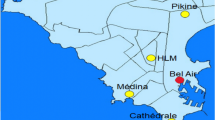Abstract
In recent decades, weather prediction results in a challenging and complex task in various disciplines. However, prediction of the atmospheric parameters is significant in various applications, like climate monitoring, agriculture and production, aviation industry, pollution dispersal, and drought detection. Due to the dynamic nature of the atmosphere, accurate prediction of the weather parameters is more complex. Sea Surface Temperature (SST) is the major factor that affects ocean climate. Hence, it is more important to analyze the atmospheric and oceanic parameters, like SST, Sea Surface Height (SSH), wind velocity, and soil moisture, for forecasting the weather. Hence, this research has developed an effective method named Autoregressive Deer Hunting Optimization (ArDHO)-based Deep Recurrent Neural Network (Deep RNN) for investigating the atmospheric and oceanic parameters. The technical indicators associated with the atmospheric data are effectively extracted. The process of data augmentation enabled to achieve higher dimensionality of data, as the deep learning classifier is more effective in generating optimal results with the high dimensional training samples. Finally, the Deep RNN classifier is employed to make the prediction strategy, and the training process of the classifier is done with the proposed optimization algorithm. However, the proposed method achieved higher performance by obtaining minimal MSE, RMSE, and speed value of 0.0524, 0.2288, and 31.25 and the maximal model size of 23.














Similar content being viewed by others
References
Wang X, Wang W, Yan B (2020) Tropical cyclone intensity change prediction based on surrounding environmental conditions with deep learning. Water 12(10):2685
Sarkar PP, Janardhan P, Roy P (2020) Prediction of sea surface temperatures using deep learning neural networks. SN Applied Sciences 2(8):1–14
Im ES, Eltahir EA (2018) Simulation of the diurnal variation of rainfall over the western maritime continent using a regional climate model. Clim Dyn 51(1):73–88
He Q, Zha C, Song W, Hao Z, Du Y, Liotta A, Perra C (2020) Improved particle swarm optimization for sea surface temperature prediction. Energies 13(6):1369
Wolff S, O'Donncha F, Chen B (2020) Statistical and machine learning ensemble modelling to forecast sea surface temperature. J Mar Syst 208:103347
Xiao C, Chen N, Hu C, Wang K, Gong J, Chen Z (2019) Short and mid-term sea surface temperature prediction using time-series satellite data and LSTM-AdaBoost combination approach. Remote Sens Environ 233:111358
Zhang Z, Pan X, Jiang T, Sui B, Liu C, Sun W (2020) Monthly and quarterly sea surface temperature prediction based on gated recurrent unit neural network. Journal of Marine Science and Engineering 8(4):249
Ye X, Wu Z (2021) Seasonal prediction of Arctic summer sea ice concentration from a partial least squares regression model. Atmosphere 12(2):230
Engle RF, Manganelli S (2004) CAViaR: conditional autoregressive value at risk by regression quantiles. J Bus Econ Stat 22(4):367–381
Brammya G, Praveena S, NinuPreetha NS, Ramya R, Rajakumar BR, Binu D (2019) Deer hunting optimization algorithm: a new nature-inspired meta-heuristic paradigm. Comput J
Inoue M, Inoue S, Nishida T (2018) Deep recurrent neural network for mobile human activity recognition with high throughput. Artificial Life and Robotics 23(2):173–185
The SST dataset will be extracted from, "https://www.ncei.noaa.gov/pub/data/cmb/ersst/v5/netcdf/?C=D;O=D", accessed on March 2021.
SLH data acquired from, "https://data.gov.au/dataset/ds-marlin-800eeed8-2bb3-4ba0-b5a4-ab89ab756406/distribution/dist-marlin-800eeed8-2bb3-4ba0-b5a4-ab89ab756406-", accessed on March 2021.
Soil moisture dataset, "https://www.kaggle.com/amirmohammdjalili/soil-moisture-dataset", accessed on March 2021.
Wind speed dataset, "https://developer.nrel.gov/docs/wind/wind-toolkit/india-wind-download/", accessed on March 2021.
Pal NR, Pal S, Das J, Majumdar K (2003) SOFM-MLP: a hybrid neural network for atmospheric temperature prediction. IEEE Trans Geosci Remote Sens 41(12):2783–2791
Riordan D, Hansen BK (2002) A fuzzy case-based system for weather prediction. Engineering Intelligent Systems for Electrical Engineering and Communications 10(3):139–146
Li, Y.; Zhang, H.; Shen, Q., "Spectral–Spatial Classification of Hyperspectral Imagery with 3D Convolutional Neural Network", Remote Sensing, vol.9, no.67, 2017.
Lee, J.; Im, J.; Cha, D.; Park, H.; Sim, S., "Tropical Cyclone Intensity Estimation Using Multi-DimensionalConvolutional Neural Networks from Geostationary Satellite Data", Remote Sensing,vol.12, no.108, 2019.
Maloney ED, Hartmann DL (2000) Modulation of eastern North Pacific hurricanes by the madden–JulianOscillation. Journal of Climate 13:1451–1460
Shynkevich Y, McGinnity TM, Coleman SA, Belatreche A, Li Y (2017) Forecasting price movements using technical indicators: investigating the impact of varying input window length. Neurocomputing 264:71–88
Le Pichon A, Assink JD, Heinrich P, Blanc E, Charlton-Perez A, Lee CF, Keckhut P, Hauchecorne A, Rüfenacht R, Kämpfer N, Drob DP (2015) Comparison of co-located independent ground-based middle atmospheric wind and temperature measurements with numerical weather prediction models. Journal of Geophysical Research: Atmospheres 120(16):8318–8331
Palmer TN (1993) Extended-range atmospheric prediction and the Lorenz model. Bull Am Meteorol Soc 74(1):49–66
Radhika Y, Shashi M (2009) Atmospheric temperature prediction using support vector machines. International journal of computer theory and engineering 1(1):55
Angot, G., Keckhut, P., Hauchecorne, A. and Claud, C., "Contribution of stratospheric warmings to temperature trends in the middle atmosphere from the lidar series obtained at Haute-Provence Observatory (44° N)", Journal of Geophysical Research: Atmospheres, vol. 117, no. D21, 2012.
Author information
Authors and Affiliations
Corresponding author
Additional information
Publisher’s note
Springer Nature remains neutral with regard to jurisdictional claims in published maps and institutional affiliations.
Rights and permissions
About this article
Cite this article
Raj, S., Tripathi, S. & Tripathi, K.C. ArDHO-deep RNN: autoregressive deer hunting optimization based deep recurrent neural network in investigating atmospheric and oceanic parameters. Multimed Tools Appl 81, 7561–7588 (2022). https://doi.org/10.1007/s11042-021-11794-z
Received:
Revised:
Accepted:
Published:
Issue Date:
DOI: https://doi.org/10.1007/s11042-021-11794-z




